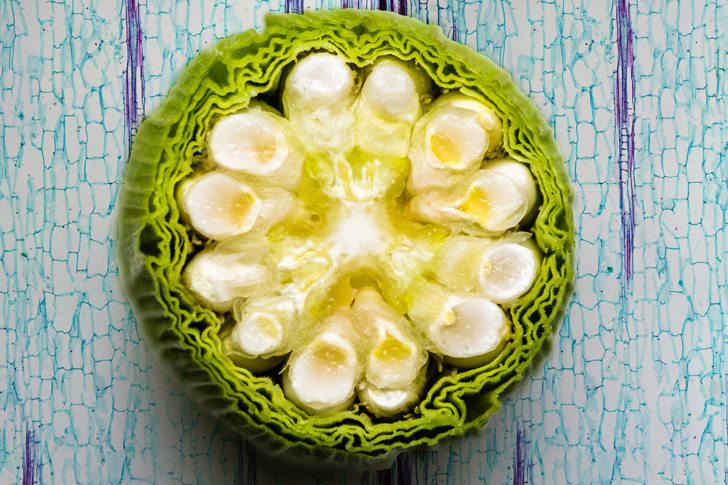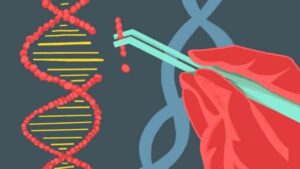Plant breeding innovations comprise a number of methods that plant breeders and researchers use to more precisely and quickly improve crops for farmers. Here, you’ll find a breakdown of the methods being used and a brief description of how they work.
Today’s science uses advanced tools, techniques and methods, giving plant breeders much more control of the end product. This allows them to reach their endpoint in a much more efficient and timely manner and will allow farmers to have access to improved varieties at a much faster pace to meet their ever-changing needs. Below is a list of seven of the eight methods (grafting on GM rootstock not included) being used by plant breeders.
Site-Directed Nucleases
Site-directed nucleases include three main methods: Meganucleases, Zinc-finger nucleases (ZFNs) and Transcription Activator Like Effector Nucleases (TALENs). These technologies rely on biological molecules that have both a DNA-binding domain that recognizes a specific DNA sequence (the site direction) and a DNA cleavage activity (the nuclease), which, when added to a plant cell, results in a specific, predetermined break in the plant’s DNA. The plant’s natural DNA repair mechanism recognizes this break and repairs the break using enzymes naturally present in the cell.
The goal of SDN technology is to take advantage of the targeted DNA break and the host’s natural repair mechanisms to introduce specific small changes at the site of the DNA break. The change can either be a small deletion, a substitution or the addition of a number of nucleotides. Such targeted edits result in a new and desired characteristic, such as enhanced nutrient uptake or decreased production of allergens.
SDN applications are divided into three techniques (SDN-1, SDN-2 and SDN-3). All three take advantage of a double stranded break in the genome. The differences are that SDN-1 and SDN-2 do not use recombinant DNA and do not lead to the insertion of foreign DNA. However, SDN-3 introduces genetic material to the plant by means of a template containing a gene or other sequence of genetic material.
Oligo-Directed Mutagenesis
Nucleotides are organic molecules that form the basic building blocks of DNA, an organism’s genetic material. ODM makes use of oligonucleotides, or short molecules, to produce a specific single base change within the DNA of a plant. The technique relies on the introduction of an oligonucleotide into a plant cell; the inserted oligonucleotide is identical to part of the plant’s genetic material, except for the presence of one intended change. The oligonucleotide acts as a template for the plant’s natural DNA repair mechanism, which detects the mismatch between the template and the endogenous genetic material and copies the intended change into the plant’s DNA. In this way, a desired specific change in the plant’s genetic material is produced. The oligonucleotide itself is not inserted into the DNA of the plant; it remains in the plant cell only for a short period of time before it is degraded.
In practice, ODM consists of mixing pant cells with oligonucleotides, obtaining the desired change in the plant’s cells and letting those cells develop into mature plants using regular tissue culture methods. The genetic improvements for useful traits, such as disease resistance, drought tolerance and higher nutritional value occur without altering the plant’s overall genetic makeup or introducing any foreign genes. ODM produces results similar to the natural breeding process, only four times faster and in a controlled precise manner, as the desired trait is the only change generated and no further breeding has to be undertaken to obtain the desired plant.
Agro-infiltration
Also called “sensu stricto,” Agro-infiltration places plant parts in contact with cells of the bacterium Agrobacterium tumefaciens, which has the capability to transfer and integrate a part of its own DNA into the genome of the plant. This natural capability has been exploited to transfer viral genetic material to a plant cell. The transfer mimics a viral infection required to identify plants carrying a viral resistance gene. Resistant plants identified through Agro-infiltration can be used to produce progeny, which is used to develop commercial varieties. Agro-infiltration is applied very locally on a plant; as a rule, the genetic material is not stably incorporated in the germline and therefore not transmitted to progeny.
Cisgenesis
As a technique, cisgenesis is very similar to conventional breeding, but allows for a more specific transfer of genes between closely related crossable plant species. With this technique, a specific trait, such as disease resistance, is transferred from a same or closely related crossable plant species to another, without altering the plant’s overall genetic makeup. Cisgenesis allows the natural breeding process to occur up to four times faster and in a controlled manner, as the desired trait is exclusively introduced and no further breeding must be undertaken to eliminate unwanted characteristics in the new plant variety. As with conventional breeding, the donor plant must be crossable with the recipient plant, and the genetic transfer could also occur naturally as a result of crossbreeding.
Reverse Breeding
Reverse breeding allows production of new hybrid plant varieties in a much shorter timeframe and ambient numbers compared to conventional plant breeding techniques. In reverse breeding, an individual plant is chosen for its elite quality. By suppressing normal genetic recombination, homozygous parental lines are derived from this plant. Upon crossing, these parental lines can reconstitute the original genetic composition of the selected elite plant, from which the lines were derived. During reverse breeding, a genetic modification step is employed to suppress genetic recombination; however, the final selected variety and their parental lines do not contain this genetic modification.
RNA-directed DNA Methylation
In the process of RNA-directed DNA methylation, short double-stranded RNA molecules (dsRNA) with homology to a target site in the plant genome are introduced into plant cells. This dsRNA is subsequently recognized by the plant’s natural defense mechanism, which recruits an enzyme called DICER, which breaks the dsRNAs down into smaller RNA molecules called small interfacing RNAs (siRNAs). These siRNA molecules then direct the plant’s defense mechanism to methylate the DNA of the target site through a DNA methylation pathway.
Referred to as an “epigenetic” modification, the plant’s nucleotide sequence is left unchanged. Rather, the chromatin structure (a complex of nucleotide sequences and proteins) is altered, resulting in decreased activity or even silencing of a specific gene. The resulting plant has no change in its genetic material compared to the starting plant material. In most cases, these changes are passed from generation to generation in the absence of the original trigger.
The production of the small double stranded RNA molecules used in RdDM can be achieved in different ways. For example, with Virus Induced Gene Silencing (VIGS), the plant is infected with a plant virus that is engineered to produce the dsRNA. Alternatively, it is possible to introduce a transgene that leads to the production of dsRNA.
After silencing is achieved, the methylation is maintained, resulting in the gene being silenced in future generations, but the genetic material coding for the RNA is lost. In the case of VIGS, the original viral genetic material containing the sequences for the production of dsRNA is lost during meiosis; in the case of introduction of a transgene, the gene is removed by crossing with plants that do not possess the transgene. As a result, the final selected variety (the “product”) is not genetically modified since there is no introduction of genetic material into the plant and there has been no alteration of the plant’s nucleotide sequence compared to the starting material. The only difference is the specific methylation of a certain stretch of DNA resulting in the desired trait; a common characteristic of all methods of RdDM used for plant breeding.
Source: NBTPlatform.org.













